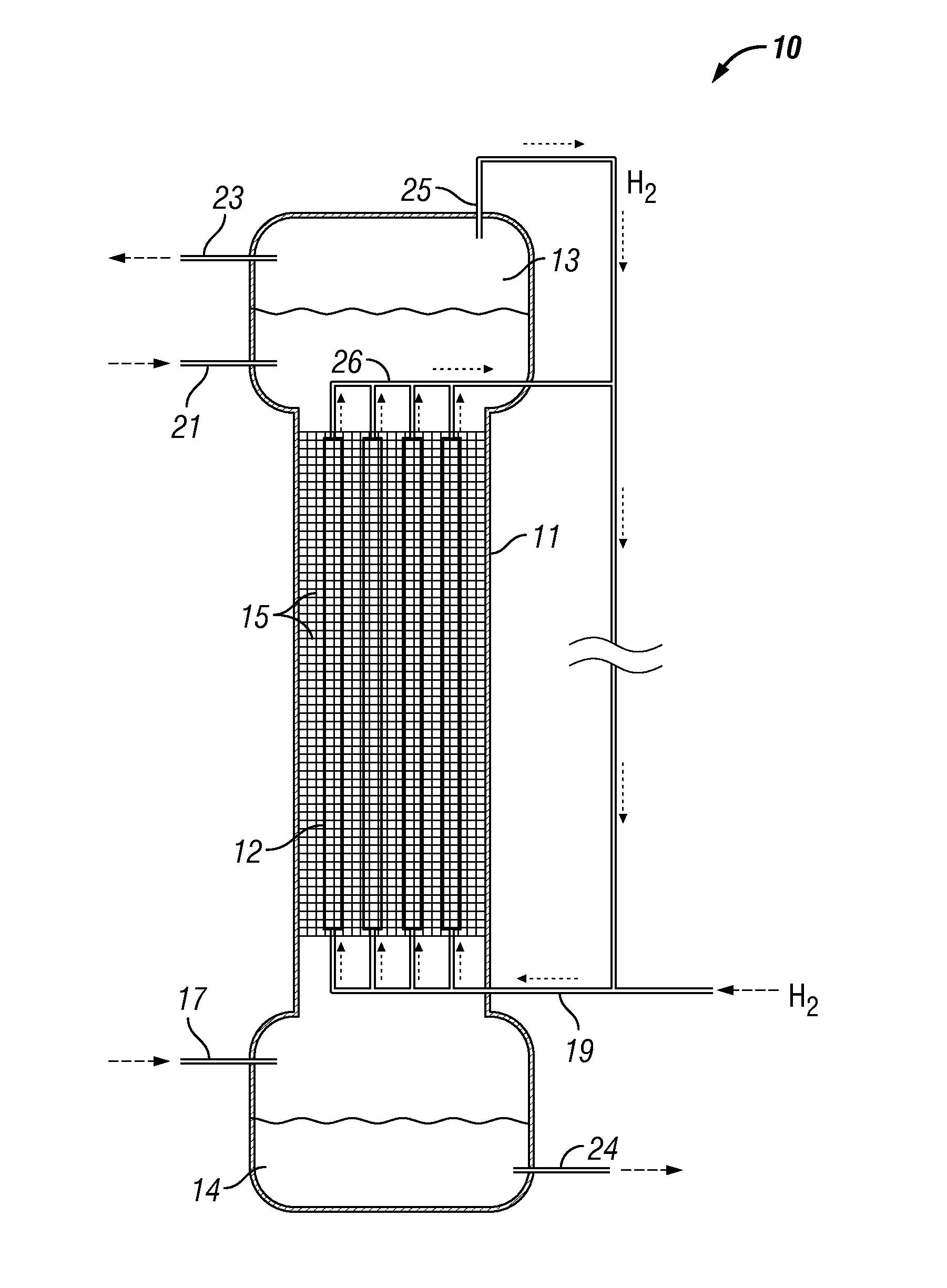Thermochemical preparation of monoalcohols from biomass
a technology of monoalcohol and biomass, which is applied in the preparation of oxygen-containing compounds, organic chemistry, and oh group elimination. it can solve the problems of engine plugging problems, present storage and stability problems, and inacceptable corrosion in both blending equipment and consumer cars
- Summary
- Abstract
- Description
- Claims
- Application Information
AI Technical Summary
Benefits of technology
Problems solved by technology
Method used
Image
Examples
Embodiment Construction
[0013]Turning now to the detailed description of the preferred arrangement or arrangements of the present invention, it should be understood that the inventive features and concepts may be manifested in other arrangements and that the scope of the invention is not limited to the embodiments described or illustrated. The scope of the invention is intended only to be limited by the scope of the claims that follow.
[0014]The present invention provides a hydrothermal route to the production of mono-alcohols from biomass carbohydrates. The invention does not address the processing steps from biomass carbohydrates to polyhydric alcohols as those technologies have been developed or are being developed for cellulosic materials. It is believed that those technologies for cellulosics are coming and that the present invention fills a gap by converting polyhydric alcohols to mono-alcohols.
[0015]As shown in FIG. 1, a reaction system 10 which comprises a reactor 11 with a metal-based catalyst supp...
PUM
| Property | Measurement | Unit |
|---|---|---|
| Pressures | aaaaa | aaaaa |
| Pressures | aaaaa | aaaaa |
| Pressures | aaaaa | aaaaa |
Abstract
Description
Claims
Application Information
 Login to View More
Login to View More - R&D
- Intellectual Property
- Life Sciences
- Materials
- Tech Scout
- Unparalleled Data Quality
- Higher Quality Content
- 60% Fewer Hallucinations
Browse by: Latest US Patents, China's latest patents, Technical Efficacy Thesaurus, Application Domain, Technology Topic, Popular Technical Reports.
© 2025 PatSnap. All rights reserved.Legal|Privacy policy|Modern Slavery Act Transparency Statement|Sitemap|About US| Contact US: help@patsnap.com


